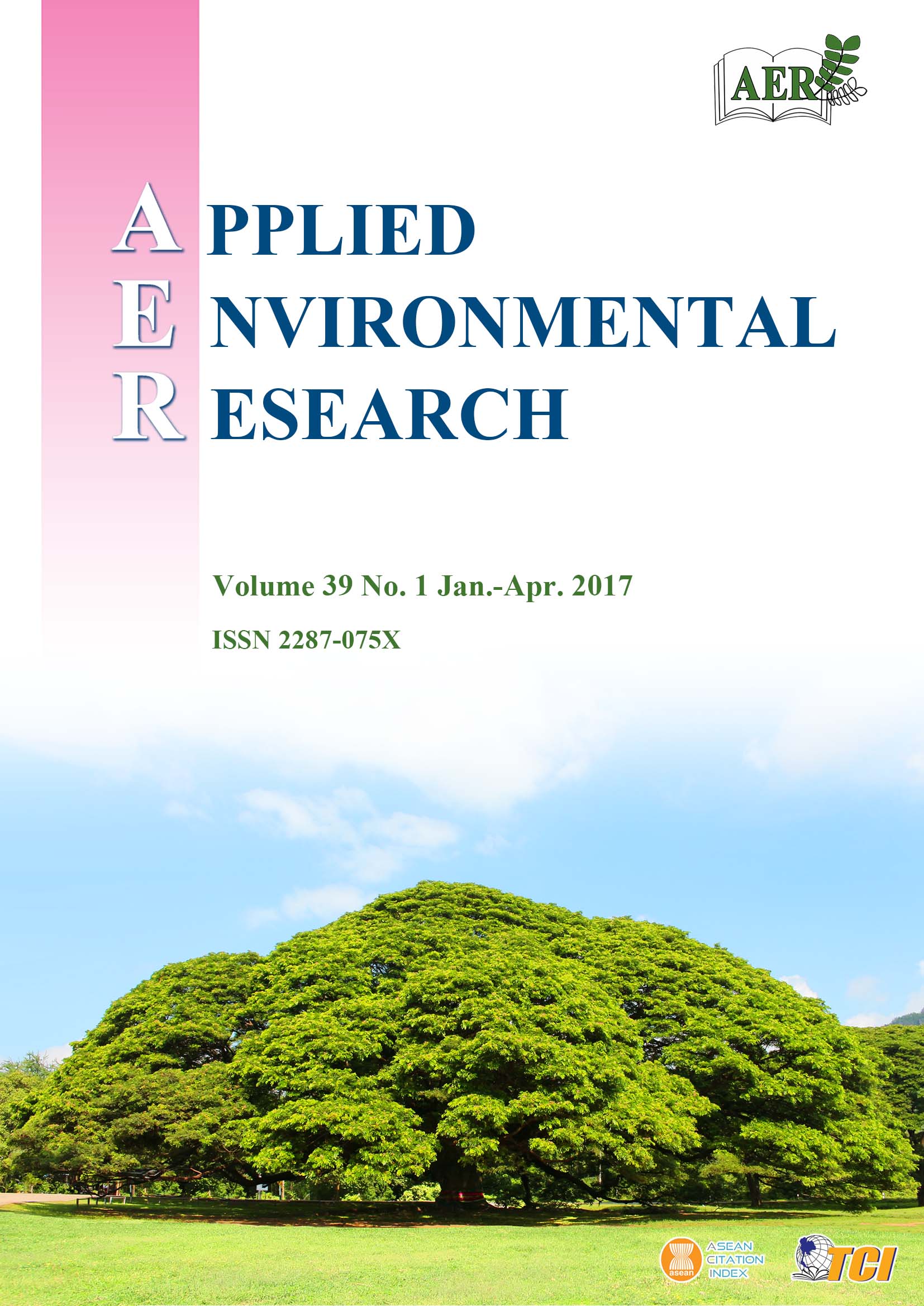Treatment of Piggery Wastewater by Three Grass Species Growing in a Constructed Wetland
Main Article Content
Abstract
The study aimed to investigate the efficiency of piggery wastewater treatment by the surface flow constructed wetland with three different grass species; bulrush (Scirpus spp.), cattail (Typha angustifolia L.), and vetiver grass (Vetiveria zizanioides L.). All pilot units were used for wastewater treatment by the flowing surface water system, giving a system carrying capacity of several 0.18 m3 d-1 of HLR with a 5 day hydraulic retention time (HRT). The results showed that the cattail pilot showed improvement in several wastewater quality indicators: biochemical oxygen demand (BOD), chemical oxygen demand (COD) and total kjeldahl nitrogen (TKN) with efficiencies of 80.59, 84.11 and 88.08 %, respectively. The vetiver grass was most efficient of the three grasses in treating total phosphorus (TP). The efficiency of constructed wetland treatment using bulrush and cattail for TP was not significantly different. The piggery wastewater treatment with a 5 day HRT was able to reduce the dirtiness in wastewater but ultimately was unable to meet the wastewater quality standard. Thus, the periods for hydraulic retention time should be increased to establish the optimal retention time for effective wastewater treatment.
Article Details

This work is licensed under a Creative Commons Attribution-NonCommercial 4.0 International License.
Published articles are under the copyright of the Applied Environmental Research effective when the article is accepted for publication thus granting Applied Environmental Research all rights for the work so that both parties may be protected from the consequences of unauthorized use. Partially or totally publication of an article elsewhere is possible only after the consent from the editors.

